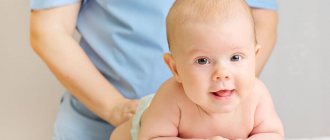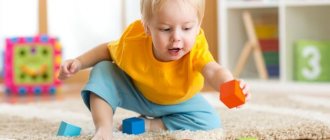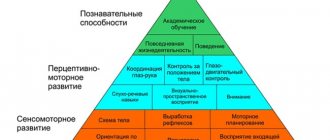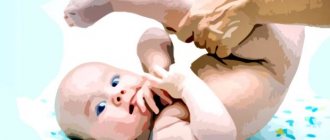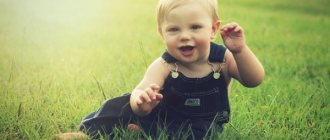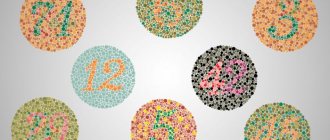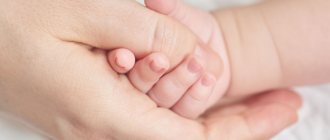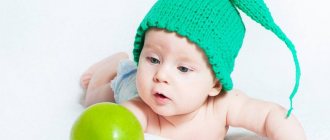Psychomotor development of a child at an early age
FIRST YEAR OF LIFE
From 1 to 3 months.
Sensory reactions. At 1 month of life, children develop initial auditory and visual concentration. The child turns his head in response to strong sound and visual stimulation. At 2 months he fixes his gaze well on a stationary object. By 3 months, he fixes his gaze on an object moving in a horizontal plane. Turns head and eyes towards the source of the sound. During this period, hand-eye coordination develops. The child watches the play of his own hands. It distinguishes between sweet, bitter and neutral well. Differentiated reactions to various painful stimuli appear. There is a perception of the contour (mother's face).
Motor functions. The flexor muscle hypertension characteristic of children in the first month of life gradually decreases. The range of movements increases, the tone of the extensor muscles increases. The child increasingly extends his arms, moves them to the sides, and raises them to a horizontal level and higher. Holds a toy placed in his hand and pulls it into his mouth.
A bright toy causes visual concentration in the child. He stretches out his hands to it, touches it, pushes it, but does not yet grab it. Thus, a component of the future act of grasping appears - the movement of the hand towards the object and hand-eye coordination. In the supine position, the child raises his head and stretches forward.
Speech. The child begins to walk. Pronounces single vowel sounds. At the moment of humming, general movements slow down.
Psyche. Positive emotional reactions appear. The child begins to smile and laugh while communicating with adults.
From 3 to 6 months.
Sensory reactions. The child holds an object in his field of vision for a long time and follows with his gaze an object moving in different directions. By the end of this period, he can well determine the direction of sound in space. Visual and auditory differentiation develops. The child distinguishes between close and unfamiliar people. Well differentiates some voice intonations. Visual-motor coordination improves and initial manipulation of objects appears. The child quickly and accurately grasps the visible toy. A more subtle taste differentiation appears (distinguishes slightly sweetened water from plain water). Localizes a tactile stimulus (turns the head in the direction of touch).
Motor functions. Muscle tone is normalized. Active hand movements develop. The child turns from back to side. Towards the end of this period, he turns onto his stomach. Holds his head well. Sits with support.
At 3 months, in a prone position, he rests on his forearm and lifts his upper body. In a vertical position, straightens the body, sometimes resting on the toes. At 4 months, he begins to feel the diaper, holds his hands for a long time at the edge of the blanket and fingers it. In other words, the formation of a sensing mechanism occurs. At 3 months the reaction of looking at hands appears. This reaction lasts for 4 - 5 months and then disappears. At 4 months, the involuntary grasping reaction subsides. Voluntary grasping gradually develops. At first, when grasping, many unnecessary movements are made: arms and legs move, the mouth opens. Subsequently, the capture reaction improves. At 5-6 months it easily occurs when an object is at arm's length (or closer). Later, the child begins to grasp an object with one hand while opposing the thumb to the rest. Visual-motor coordination is improved and strengthened. In the development of hand movements, the visual analyzer begins to acquire predominant importance. At the age of 6 months, a child lying on his back quickly and accurately reaches out to a toy that comes into view.
Speech. The humming becomes active and prolonged. Babbling appears, a repetition of sounds that have already been reproduced. The child varies the tone of his voice. The sound m appears. The number of pronounced vowel sounds increases.
Psyche. The revitalization complex is developing intensively. At 4-5 months, while communicating with adults, almost simultaneously he begins to smile, move animatedly and make sounds. A powerful stimulus for mental development is the development of hand-eye coordination.
Emotional reactions become differentiated. A selective smile appears. Communication through gestures develops. Games become longer and more constant (the child manipulates toys, looks for a fallen toy, etc.).
From 6 to 9 months.
Sensory reactions. Visual and sound reactions are differentiated. The child recognizes the faces and voices of friends. Localizes auditory and tactile stimuli more clearly.
Motor functions. An equilibrium reaction appears. The ability to fully straighten the torso develops. The child turns from back to stomach and from stomach to back. Hand movements are controlled by vision.
In the prone position, the child rests well on his outstretched arms and fully extends his hips and legs. The development of the sitting function is characteristic. In the supine position, the child lifts and turns his head to the sides. Sits down from a position lying on his side, leaning on his hand. At first he sits unsteadily. As the balance response develops, sitting becomes more and more stable. From 7 months he begins to sit upright with his legs bent at the hips. The sooner he masters the ability to turn from back to stomach, he sits down.

